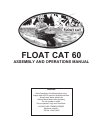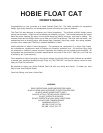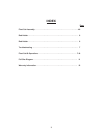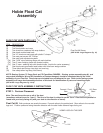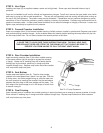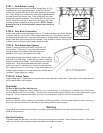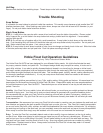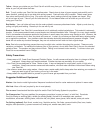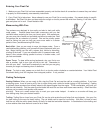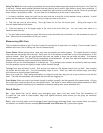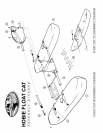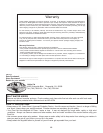
Using The Wind: Wind can cause you problems until you practice these simple techniques for fishing from Your Float Cat
in the wind. Always watch weather conditions and stay close to launch point in high winds or heavy storm conditions. If
the wind get too strong to kick against, move to nearest land, wait out wind, or walk back to vehicle. Never let yourself get
blown across a large body of water. You can often find a sheltered bay to fish even in heavy winds.
1. In breezy conditions, keep your back into the wind and use a slow kick to hold position during a retrieve. A small
anchor will also keep you in place without having to keep your back to the wind.
2. Drift with the wind for slow trolling. Don’t get blown too far from the launch point. Sitting side ways to the
wind will make the boat drift slower.
3. Cast and retrieve at a 90 degree angle to the wind as the wind drifts you. You can cover open water or a
shoreline easily this way.
4. The wind often concentrates your game fish’s food on the downwind side of the lake or on the downside of a point of
land. Where food is concentrated, so will your quarry.
Maneuvering With Oars
The oar system available for your Float Cat is ideal for covering lots of water fast or for trolling. Fins are usually used in
addition to the oars, fins for fishing and oars for distance travel.
Power Stroke: Before leaving shore, make sure oars and oarlocks are setup properly. The blades should be vertical
when the oars are straight out to the side. Raise your fins to the surface or rest them on top of the pontoons or on the
optional footrest. Move your oar grips forward then raise oar handle to lower the oar blade into water. Pull towards
you with even pressure. The Float Cat will immediately move backwards. Lift oars from water and repeat to travel any
distance. Most distance travel is accomplished with this stroke.
Practice until you can track backwards in a straight line. To go straight, even pressure is required for each oar stroke.
Vary the pressure on one oar slightly to make a small direction change.
Turning: Now, stop and learn to pivot. Sink one oar into water at a 90 degree angle to hull and hold. Use a regular
oar stroke with the other oar. You will immediately begin to pivot. When you reach the desired angle, pull evenly
with both oars to propel yourself backwards.
Next, do a power turn. Start rowing backwards in a straight line and then drag one oar as you continue to row with the
other. The craft will immediately turn towards the side with the dragging oar.
Push Stroke: When you want to go forward (mostly to position yourself), use the opposite of the power stroke. Lift your
fins or trail them under the sear as you push with the oars. This stroke is not as efficient as the power stroke but is ideal
for positioning yourself (sneaking up to a weedbed, a shoreline feeding land, some waterbirds etc.).
Do’s & Don’ts
Do- Learn basics first, use fin tethers, carry emergency gear, wear a life vest, check Float Cat connections, sit
to install fins, use waist or chest waders, keep back against backrest, watch where you are going, be courteous
to other anglers.
Don’t- Use on moving water, sit on front edge of seat, travel through motorboat routes, use in severe winds, try to stand
on kickboat, use without life vest, overload (250 lb max 60" and 350 lb max 75"), crowd other anglers.
10



